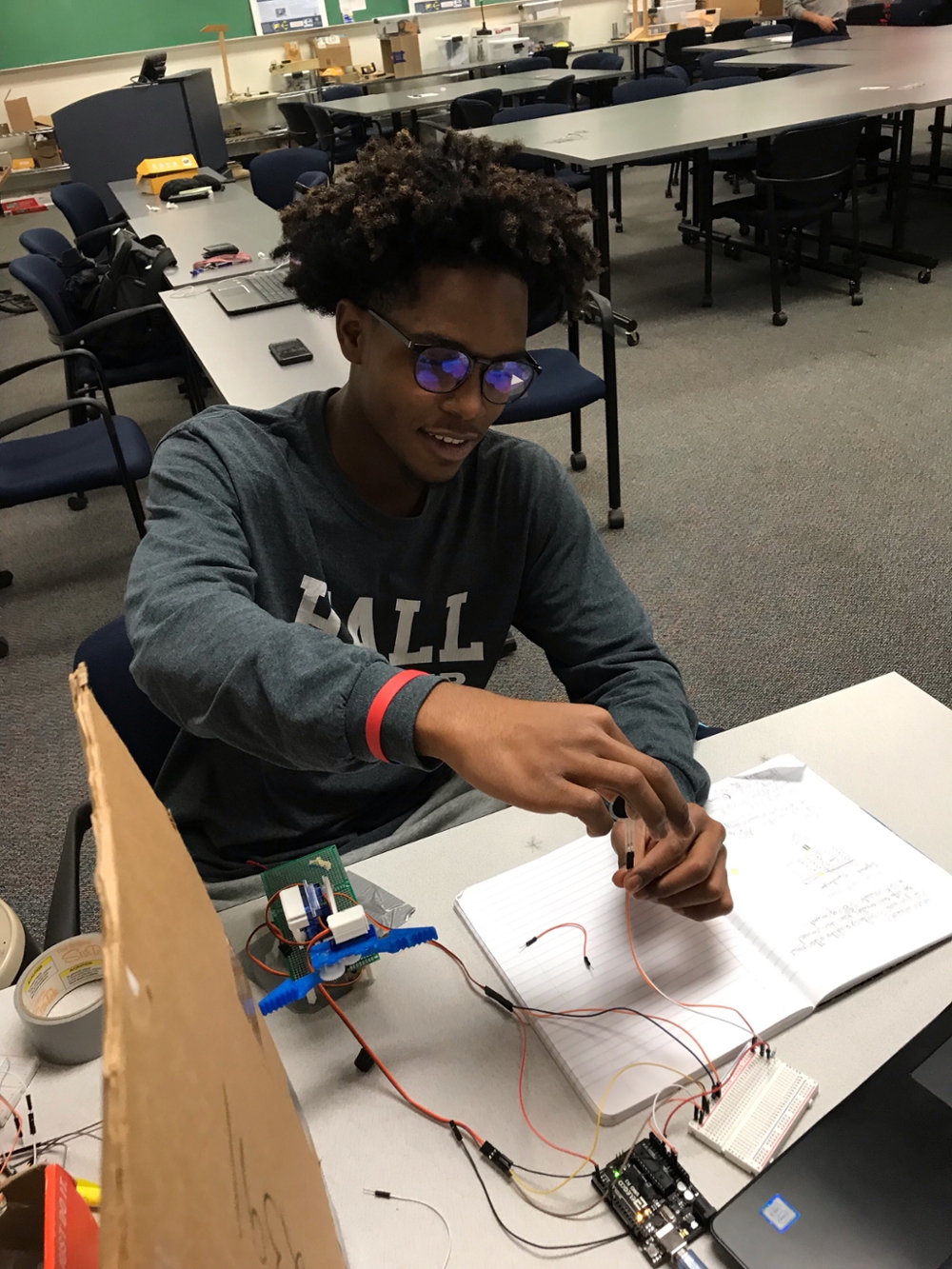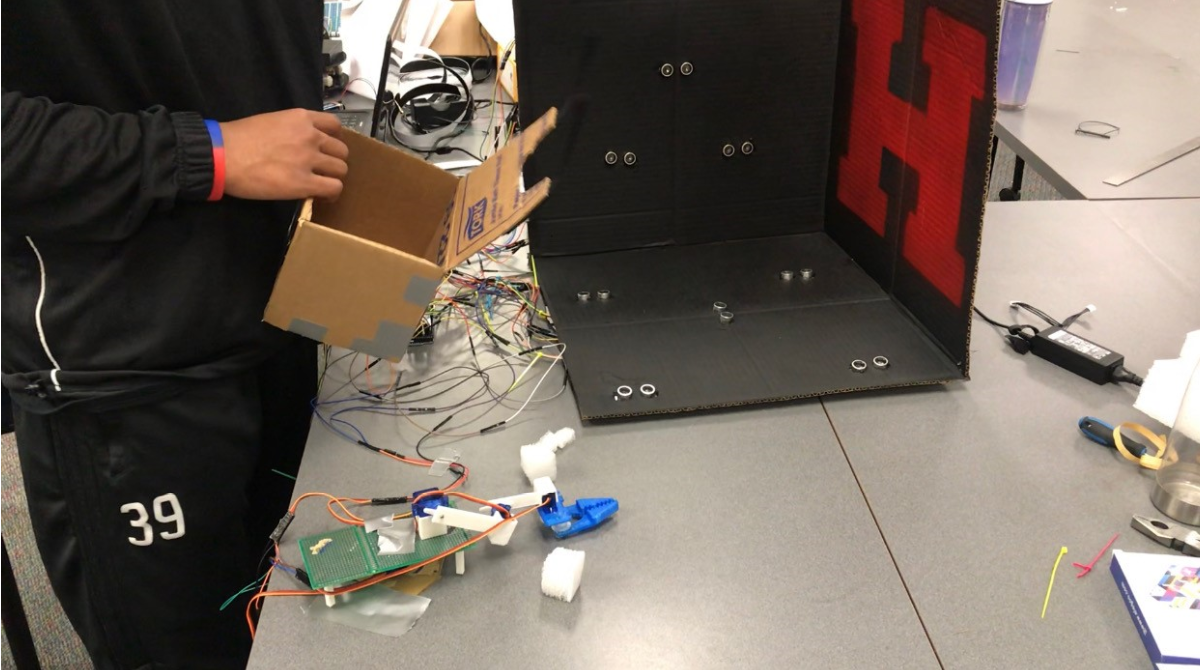
First-year student finds passion in robotics after CETA Design Expo.
After just one semester at UHart, Jordaine Wisdom ’23 says he has found his new passion in robotics. He chose to attend to UHart because of the small-sized classes and the ability to interact with his professors one-on-one. He says he was also drawn to the top class engineering program that the school offers.
Now as a declared robotics engineering major, his passion for robotics only grew strong through the CETA Design Expo, an event hosted at the end of each semester. The fall expo gives first-year students their first opportunity to work on a design challenge as a team. Being interested in technology growing up, he pitched the idea of creating a gesture-controlled robotic arm for the project. Wisdom with fellow classmates Ryan Douglas ’23 and Johann Strasser ’23 and their project Heavy Lifting was the top winning project for the first-year ES 143P course.
Jordaine Wisdom ’23, BSREI always knew I wanted to do something with technology but, I never knew what specifically. During the recent CETA design expo, I was able to find my passion for robotics. I knew I was interested in robotics because it didn’t feel like extra work. I actually found myself rushing to the Makerspace with any free time I had because I was so fascinated with the whole process of designing and coding the robot.

The first version of the project used 10 ultrasonic sensors. To mimic the X and Y axis, five ultrasonics were placed on the X and the rest on the Y-axis. The device worked by placing a box around the user’s hand and having the ultrasonics track the hand within the range. Wisdom didn’t stop after the expo, though. Over the winter break, he worked on improving the project he and his team created. He took it upon himself to do more research on how he could make the arm better and came across a leap motion sensor. Leap Motion is a sensor that has two infrared cameras and an algorithm that tracks hands, fingers, and gestures in space.
After discovering this, Wisdom decided to completely redesign the arm. During finals week when the 3D printers were free, he printed out all parts that would be needed to assemble the second version of the robotic arm over winter break. He eventually achieved his first big breakthrough when he was able to start sending information from the leap motion to the servo motors. After some time and coding, Wisdom was able to write a script that allowed him to control the arm via the leap motion. But with any kind of engineering project comes mishaps. He continued his research to improve the device even more and found that inverse kinematics was needed for the robot to mimic his hand’s placement in space. Wisdom took the time to teach himself inverse kinematics via YouTube and Google. After feeling comfortable with the calculations, he coded in the inverse kinematics functions into the existing code and finally, the robot now resembled the end product he envisioned at the start of the expo.
Wisdom’s impressive work as just a first-year student has been recognized by various faculty of the College as well. His drive and dedication to solving problems, improving his own projects, and taking the time to research new solutions mirror the culture within CETA and how many students find success in their programs and ultimately their careers.